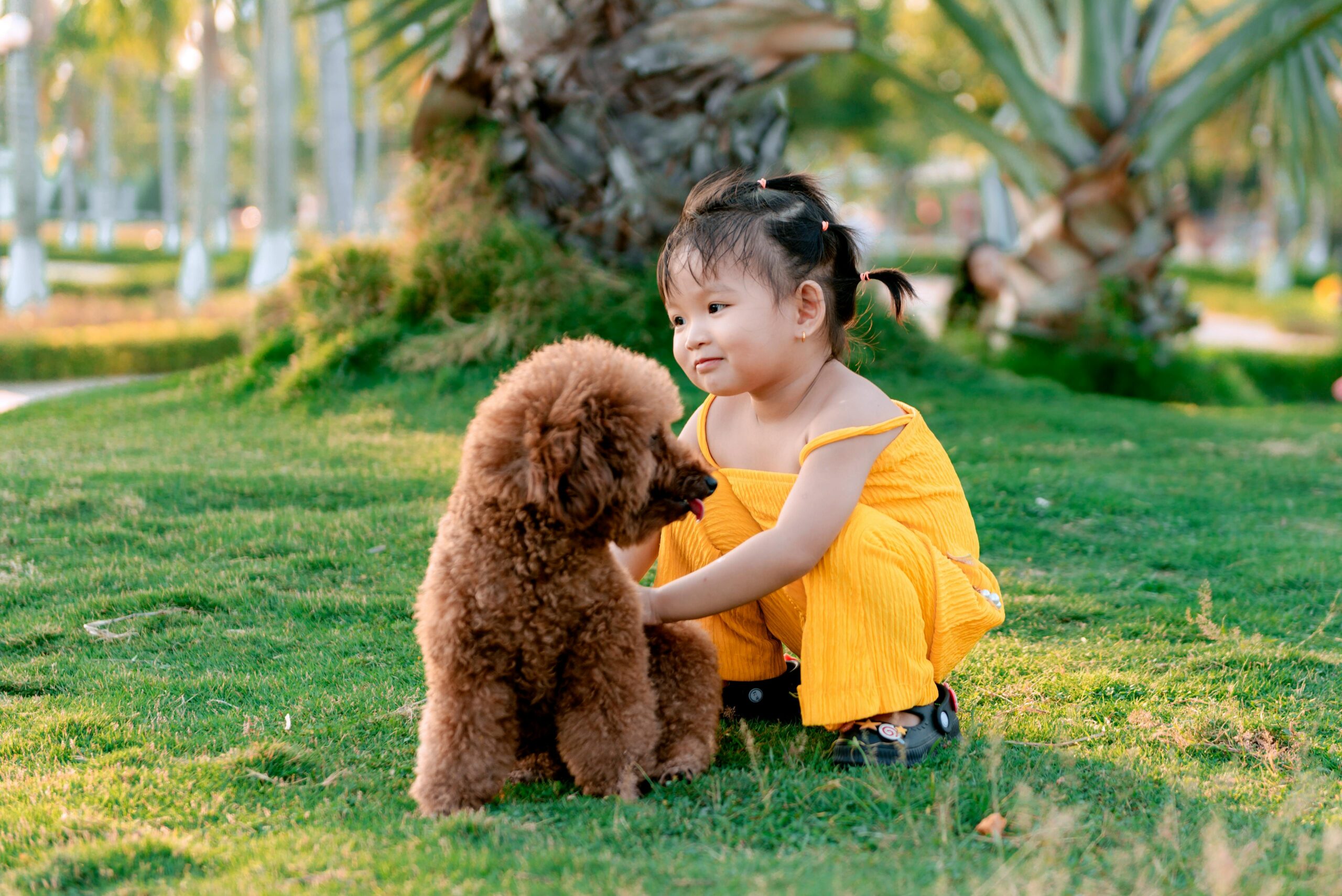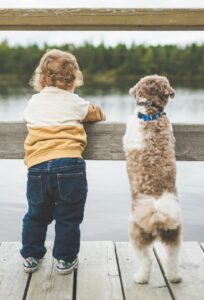Raising kids and dogs together can be one of the most rewarding experiences a family can share. When done right, the bond formed between a child and a dog is not only heartwarming but also educational. But let’s be honest, it’s not always easy. From tug-of-war with toys to misunderstandings over space and energy levels, a little training goes a long way in keeping your home running smoothly.
As a professional dog trainer, I’ve worked with countless families in the Toledo area who struggle with balancing their kids’ excitement and their dog’s boundaries. The good news is that with the right structure, guidance, and a few proven techniques, you can foster a respectful, loving relationship between your two-legged and four-legged kids.
Let’s dive into practical, real-world dog training tips tailored for families with children.
Set Your Dog Up for Success with Clear Boundaries
The first step in any family dog training plan is setting clear, consistent boundaries for your dog. Children thrive on routine, and so do dogs. Your pup needs to know what behaviors are expected and which ones are not allowed.
Start with these fundamentals:
- Use the place command to teach your dog where to settle during chaotic moments like playtime or mealtime.
- Establish a consistent schedule for walks, meals, and rest.
- Avoid giving your dog free rein in the house without supervision, especially around younger children.
These boundaries don’t just help your dog. They also give your kids a visual of when the dog is “off duty” and should be left alone. You can even make a game of it by having kids help “spot check” when the dog is on its place or behaving well.
To dive deeper into creating a calm environment, check out our post on how to prevent your dog from darting out the door. It’s a great example of using structure to manage safety.
Involve Kids in Training (Safely)
Children should be part of the training process, but with guidance. Involving them helps the dog see them as leaders, and it teaches kids about respect and responsibility.
Here’s how kids can get involved:
- Older kids can assist with leash walking using simple commands like “sit” and “heel.”
- Supervised games like hide-and-seek with treats can help build the bond.
- Kids can reward good behavior with treats or praise, with your oversight.
- Teach your child to use calm energy and avoid yelling or chasing games.
When kids are part of the process, your dog learns that listening applies to all family members, not just the adults.
If you’re just getting started or want to go beyond the basics, our Basic Obedience Program is designed with families in mind. It builds a foundation that makes involving your children in training both easy and effective.
Teach Kids Dog Etiquette
Just like dogs need to be taught how to interact with children, kids need to learn dog etiquette too. Many so-called bad behaviors from dogs are actually responses to rough handling, loud noises, or being disturbed during rest.
Train your children with these golden rules:
- Never approach a dog while it’s eating or chewing a bone.
- Don’t pull ears, tails, or fur.
- No climbing, hugging, or sudden loud yelling near the dog.
- Respect the dog’s safe space, like a crate or place bed.
- Learn to read a dog’s body language. For example, a tail tucked under can indicate anxiety.
Educating children on how dogs communicate is one of the most important lessons you can give them. For older kids, reviewing the AKC’s dog bite prevention tips together is a great way to reinforce this understanding.
Use Games to Teach Obedience and Self-Control
Dogs and kids both love games. Use that to your advantage by turning training into something everyone looks forward to. Games not only build obedience but also help both parties burn off excess energy in a healthy way.
Try these games:
- Red Light, Green Light: Teaches impulse control and commands like “sit” and “stay.”
- Find It: Kids hide treats while the dog searches, practicing nose work.
- Obstacle Course: Build a simple one in the yard for both your kids and dog to use together.
Game-based learning is an incredibly effective method for training dogs of all ages. We recently shared a full breakdown on game-based learning vs. gamification and how it can change the way your dog learns.
Set Expectations for Visitors and Friends
One of the biggest mistakes families make is assuming their dog will behave perfectly when guests, or their kids’ friends, come over. Dogs need time to adjust to new people and high-energy environments. If your dog isn’t ready, don’t force interactions.
Set everyone up for success:
- Use baby gates or a leash to create separation if needed.
- Let your dog meet guests on neutral ground outside first.
- Give the dog breaks away from visitors in a calm space.
Know When to Get Professional Help
Sometimes, even the best efforts can fall short if the dog is reactive, overly excited, or fearful around children. If your dog shows signs of stress or aggression, don’t ignore them.
Professional training helps eliminate guesswork and gives your dog the tools to respond calmly to unpredictable environments, like life with kids.
Our Basic & Advanced Obedience programs are perfect for family dogs who need structure, clarity, and consistent follow-through from all members of the home.
Final Thoughts: Train the Whole Family
Dog training is never just about the dog. It’s about the household. Families that train together grow together. With consistency, clear boundaries, and a good dose of patience, your kids and your dog can build a bond that lasts a lifetime.
Ready to create a safe, well-balanced environment for your dog and kids? Contact us today to find the right training program for your entire family.


